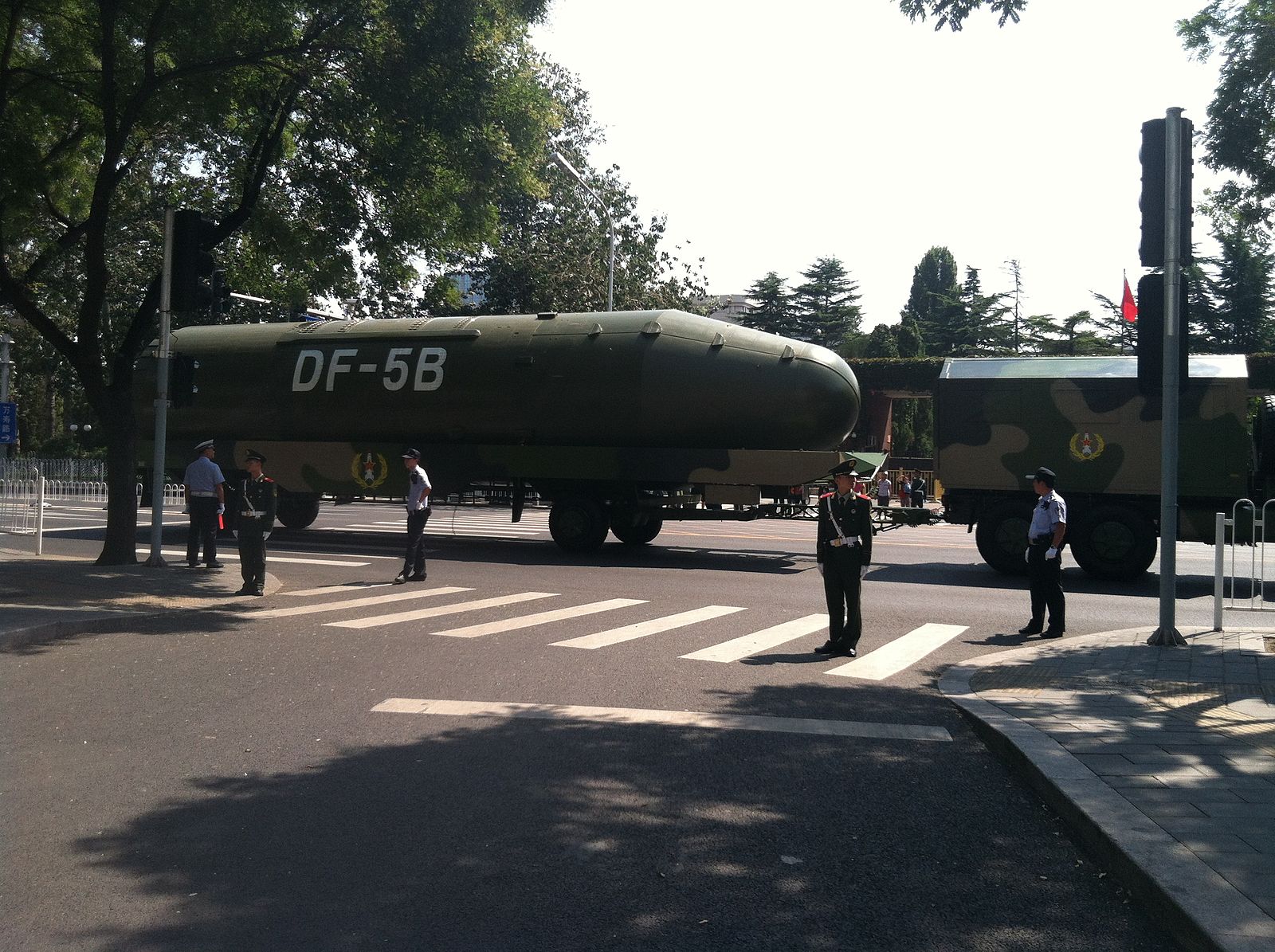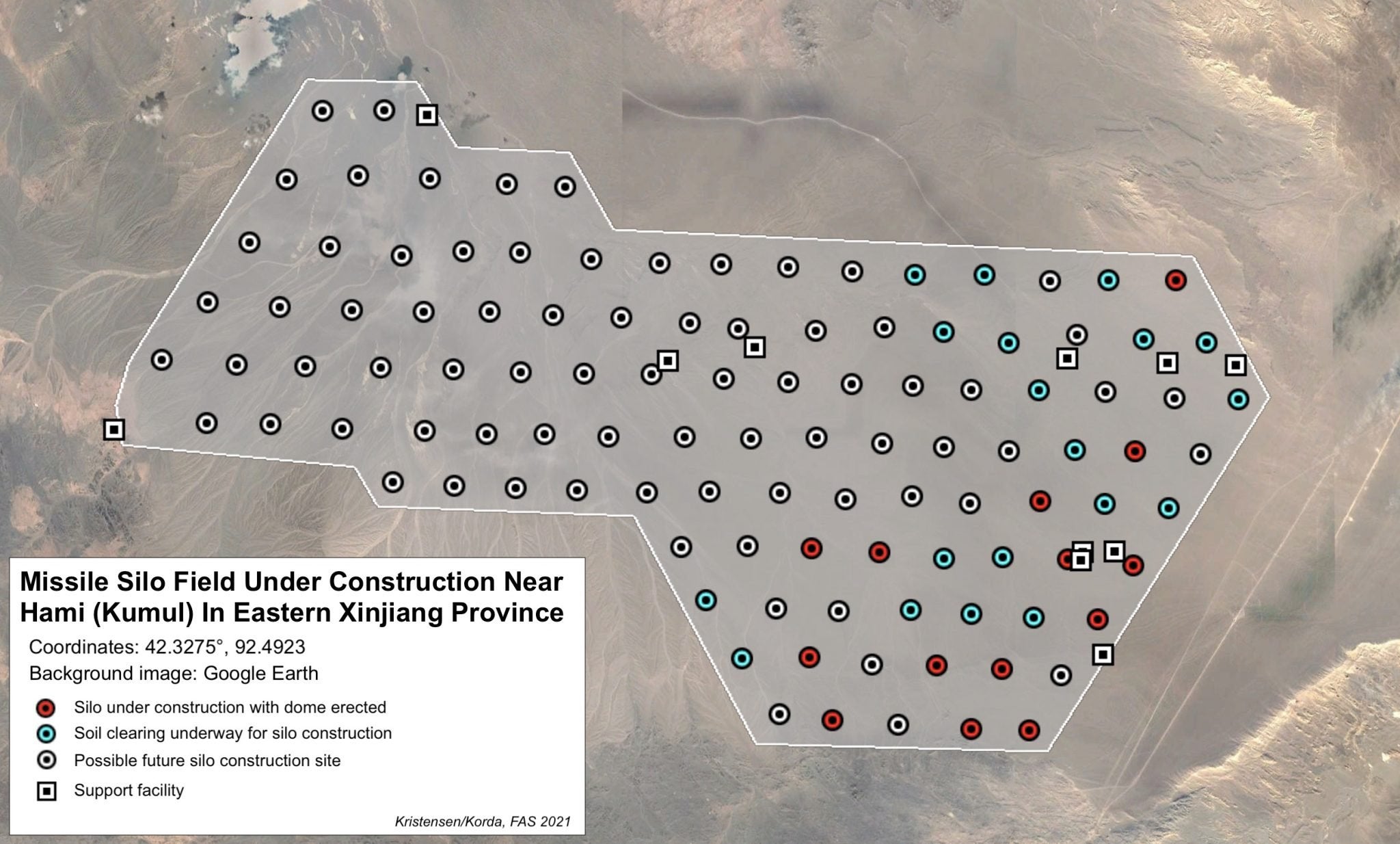Huge desert plot in China to ‘hold up to 110 nuclear silos’
The site in the Xinjiang province is as big as New York City

Your support helps us to tell the story
From reproductive rights to climate change to Big Tech, The Independent is on the ground when the story is developing. Whether it's investigating the financials of Elon Musk's pro-Trump PAC or producing our latest documentary, 'The A Word', which shines a light on the American women fighting for reproductive rights, we know how important it is to parse out the facts from the messaging.
At such a critical moment in US history, we need reporters on the ground. Your donation allows us to keep sending journalists to speak to both sides of the story.
The Independent is trusted by Americans across the entire political spectrum. And unlike many other quality news outlets, we choose not to lock Americans out of our reporting and analysis with paywalls. We believe quality journalism should be available to everyone, paid for by those who can afford it.
Your support makes all the difference.A huge plot in China with the potential to hold up to 110 nuclear silos has been discovered by American researchers.
The expanse of land in the Gobi desert, near the city of Hami in the Xinjiang province, has 14 completed silos and the ground is cleared to build another 19, researchers at the Federation of American Scientists (FAS) said.
It could have up to 110 underground silos built on it judging by the “grid-like outline of the entire complex,” said the non-profit global think tank that pledges to use “science for a safer, more informed world”.
The field spans about 300 sq miles – the size of New York City’s land mass – and is a similar size to a silo site discovered last month in Yumen, in Xinjiang’s neighbouring province Gansu.
The two sites are similar in “construction and organisation” to another site in the Jilantai training area, in Inner Mongolia, which has approximately 12 silos.
The scientists said construction at the site near Hami – which they discovered using satellite images – likely began around March, according to a FAS blog post published on Monday.
The underground silos are typically used to house intercontinental ballistic missiles (ICBMs).
The researchers fear that the new silos are proof that China plans to rapidly increase its stockpile amid the global nuclear arms race.
FAS said that it’s not sure how the silos will be used – whether they would serve as empty decoys or to store warheads – but it added that China’s current number of about 350 warheads is expected to more than double over the next decade.
If the new silos were all loaded with missiles, Chinese ICBMs could potentially “carry more than 875 warheads assuming three warheads per missile when the Yumen and Hami missile silo fields are completed,” up from the approximately 185 warheads China has on ICBMs already – the researchers wrote.
China is the third-largest nuclear power after Russia and the US. Russia has about 6,225 warheads while the US has about 5,550. France has about 300. The UK is the fifth largest nuclear power with about 225 warheads, of which up to 120 are operationally available for deployment.

FAS said: “The Chinese government has for decades insisted it has a minimum deterrent and that it is not part of any nuclear arms race.
“Although it remains unclear how many silos will actually be filled with missiles, the massive silo construction and China's other nuclear modernisation programs are on a scale that appears to contradict these policies: the build-up is anything but ‘minimum’ and appears to be part of a race for more nuclear arms to better compete with China’s adversaries.”
FAS researchers Matt Korda and Hans M Kristensen said: “The silo construction at Yumen and Hami constitutes the most significant expansion of the Chinese nuclear arsenal ever.”
A Chinese nuclear expert has dismissed reports on the discovery of the nuclear base under construction.
Song Zhongping, a former People’s Liberation Army instructor who is based in Hong Kong, said the nuclear silos were outdated, according to the South China Morning Post.
He said: “China has already used mobile launchers and discarded these fixed silos, which are time-consuming, labour-intensive, costly and vulnerable to be attacked and destroyed.”
Join our commenting forum
Join thought-provoking conversations, follow other Independent readers and see their replies
Comments